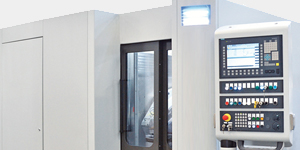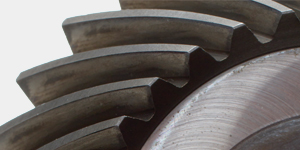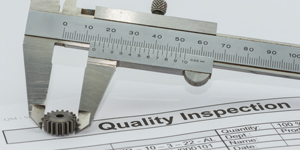-
This is the fourth in a series of articles on troubleshooting issues related to heat treating steel.
In the previous column, I discussed the quench system as a source of incorrect hardness during processing. In this column, I will discuss tempering as a source of incorrect hardness during processing.
Addendum to Previous Article
One thing I forgot to mention in the previous article about the effects of the quench system is the effects of retained austenite. For alloys containing nickel, or have been carburized and mar-tempered, there is the potential for an increased level of retained austenite present. This is due to extracting parts before the part has reached the temperature of final martensitic transformation. For some highly alloyed steels, the martensite finish temperature could be below room temperature. This means that there may be some retained austenite present which, in turn, reduces the as-quenched hardness.
If retained austenite is suspected or observed in the microstructure, then a simple remedy to a low hardness would be to place the parts in a freezer overnight to drive the martensite reaction to completion. If retained austenite were the cause of low hardness, then you should observe an increase in hardness of 1-2 HRC after placing the part in a freezer or performing a cryogenic process.

Introduction
Tempering after quenching is an important step in achieving a properly heat-treated part. If not properly controlled, tempering can lead to low properties, i.e., reduced strength, low hardness, reduced toughness, and reduced ductility. Figure 1 shows a typical heat-treating process.
Once a part has been quenched, it must be tempered. This accomplishes two things. First, it relieves the thermal and transformational stresses from quenching. Second, it transforms the hard, brittle martensite to the tougher tempered martensite. For high-alloy steels, it may also convert any residual retained austenite to tempered martensite or bainite.
When investigating low hardness from tempering, there are several variables to consider: temperature, time, and load density.
In a typical heat-treating operation, tempering is accomplished using tempering furnaces. Temper furnaces can either be batch or continuous, electric or gas-fired. They are designed to take the hard martensite obtained after quenching and soften the microstructure to form tempered martensite. Temper furnaces are available in all sizes, and have a temperature range of 150°C to 750°C.
Temper furnaces are typically constructed with steel shells surrounding refractory. They can either be stand-alone box furnaces, or they can be pit furnaces. The hearths may have either skid plates on hard refractory or may have roller rails to enable work to be readily inserted in the furnaces. In the case of pit furnaces, the work rests on the hearth. Large recirculation fans are used to provide excellent temperature uniformity, typically better than ±5°C. Air passes over the heater elements or gas-fired radiant tubes to heat the air prior to entering the chamber.
Toughness increases as the part is tempered above 150°C. In general, as the toughness increases, the hardness decreases. For high hardness applications, the tempering temperature is kept low, usually between 150-200°C. The martensite partially decomposes and forms very fine carbide precipitates [1]. The precipitates that form are transition carbides of epsilon-carbide (ε-carbide) and eta-carbide (η-carbide) [2]. They are not cementite. There is a small increase in toughness, but the matrix remains hard.

When steels are tempered between 200-400°C, the martensite precipitates cementite (χ-carbide) and any retained austenite transforms to ferrite and cementite. These carbides are coarse and occur within the plates or laths of martensite. The retained austenite begins to transform above 200°C [3]. There is a slight decrease in toughness associated with tempering in the range of 250-400°C called tempered martensite embrittlement.
Tempering above 400°C results in coarsening of cementite. The martensitic structure is also changed. The laths are now nearly completely ferrite because all the carbon has precipitated out as carbides. Hardness and strength fall rapidly as the tempering temperature is increased above 400°C. Toughness improves significantly. In alloy steels, fine alloy carbides may form. The formation of these fine dispersions of alloy carbides can overcome the softening effect of coarsening cementite carbides and result in an increase in hardness. This increase in hardness is called secondary hardening.
As indicated above, increasing the tempering temperature above 400°C can greatly increase toughness. However, if tin, antimony, or arsenic are present as impurities in the steel, then the steel may become brittle. This is called temper embrittlement. It is caused by the impurities segregating to the grain boundaries [4].
As the tempering temperature increases, the hardness of the part will decrease. Generally, parts are tempered for one hour per 25 mm of thickness. Some highly alloyed steels require a double temper to increase toughness and ductility. The change in hardness for plain carbon steels as a function of tempering temperature is shown in Figure 2.
If an excessive temperature is used during tempering, low hardness can result. If inadequate tempering time is used, then the resulting properties will be too high. A proper balance of time and temperature is necessary to achieve the desired properties.
There are several methods of determining the appropriate time and temperature for tempering. One method of determining time and temperature is described by Canale et al [5]. As a first step, the desired temperature is calculated using the equation developed by Just [6]:

Where Tt is the absolute temperature of tempering (°K) – valid in the range of 390 – 660°C; Hq is the as-quenched hardness (HRC); Ht is the required hardness after tempering (HRC); and S is the ratio of the as-quenched hardness versus the maximum hardness (S = Hq measured/Hmax).
The total tempering time including heat up and soaking time is calculated from [7] [8]:

Where t is the time in minutes; m is the mass of the load (kg); A is the total surface area (m3) and a and b are constants that are developed empirically for each furnace used. This method requires significant empirical work to be done to evaluate each possible furnace and alloy and load combination.
The load density can also influence the resultant hardness of parts. In a very dense load, the parts will take a long time to heat-up to the process temperature. If the parts do not reach the process temperature when the controller starts to count down the tempering time, the parts will be too hard. If the load is heated slowly, and the parts achieve the setpoint temperature at the same time, then it is likely that the parts will achieve the desired hardness. However, if the load is dense, parts in the center of the load will cool down slower and have a lower resultant hardness. For dense loads, the use of load thermocouples cannot be over-stressed.
Conclusions
In this article, the effect of time and temperature during tempering on the properties of a steel part was explored. Excessive tempering temperatures can result in low hardness, while excessive time at temperature can also result in low properties. The load density also plays a part by retarding heat-up and cool-down time during tempering.
Should you have any questions regarding these calculations, or to suggest a future article, please contact the author or the editor.
References
- D. L. Williamson, K. Nakazawa and G. Krauss, “A Study of the Early Stages of Tempering in an 1.22%C Alloy,” Met. Trans. A, vol. 10, pp. 1351-1363, 1979.
- K. H. Jack, “Structural Transformations in the Tempering of High Carbon Martensitic Steel,” ISIJ, vol. 169, pp. 26-36, 1951.
- D. L. Williamson, R. G. Schupmann, J. P. Materkowski and G. Krauss, “Determination of Small Amounts of Austenite and Carbide in a Medium Carbon Steel by Mossbaur Spectroscopy,” Met. Trans. A, vol. 10, pp. 379-382, 1979.
- C. J. McMahon, “Temper Brittleness – An Interpretive Review,” ASTM, 1968.
- L. Canale, X. Yao, J. Gu and G. E. Totten, “A historical review of steel tempering parameters,” Int. J. Microstructure and Materials Properties, vol. 3, no. 4-5, pp. 474-525, 2008.
- E. Just, “Vergüten. Werkstoffbeeinflussung durch Härten und Anlassen”, VDI Berichte, vol. 256, pp. 125-140, 1976.
- S. Jost, H. Langer, D. Pietsch and P. Uhlig, “Rechnerische Ermittlung der Erwärmdauer bei der Wärmebehandlung von Stahl”, Fertigungstechnik und Betreib, vol. 26, no. 5, pp. 298-301, 1976.
- B. Lisicic and T. Filetin, “Computer-aided determination of the process parameters for hardening and tempering structural steels,” Heattreatment of Metals, vol. 3, pp. 62-66, 1987.
- R. A. Grange, C. R. Hribal and L. F. Porter, “Hardness of Tempered Martensite in Carbon and Low Alloy Steels,” Met. Trans. A, vol. 8A, pp. 1775-1785, 1977.
- J. H. Holloman and J. H. Jaffe, “Time-temperatures relations in tempering steel,” Trans. American Inst. Mining and Met. Eng., vol. 162, pp. 223-249, 1945.
- F. R. Larson and J. Miller, “A time-temperature relationship for rupture and creep stresses,” Trans. ASME, vol. 74, pp. 765-775, 1952.
- R. A. Grange and R. W. Baughman, “Hardness of tempered martensite in carbon and low alloy steels,” Trans. ASM, vol. XLVIII, pp. 165-197, 1956.























